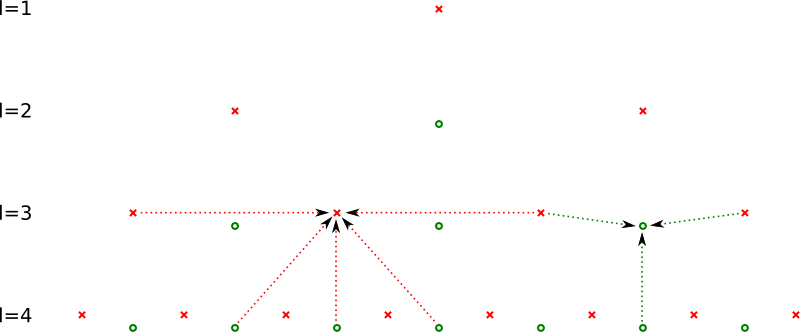 |
SG++-Doxygen-Documentation
|
 |
SG++-Doxygen-Documentation
|
Class that implements the transformation of a hierarchical linear sparse grid to a hierarchical prewavelet sparse grid. More...
#include <ConvertLinearToPrewavelet.hpp>
Public Member Functions | |
| ConvertLinearToPrewavelet (GridStorage &storage, GridStorage &shadowstorage) | |
| Constructor, must be bind to a grid. More... | |
| void | operator() (DataVector &source, DataVector &result, grid_iterator &index, size_t dim) |
| Converts a given linear base to a prewavelet base. More... | |
| ~ConvertLinearToPrewavelet () | |
| Destructor. More... | |
Protected Types | |
| typedef GridStorage::grid_iterator | grid_iterator |
| typedef index_t | index_type |
| typedef level_t | level_type |
Protected Attributes | |
| GridStorage & | shadowstorage |
| GridStorage & | storage |
| the grid object More... | |
Class that implements the transformation of a hierarchical linear sparse grid to a hierarchical prewavelet sparse grid.
Therefore the ()operator is implemented in order to use the sweep algorithm for the grid traversal. Let the coefficients from the hat basis be \( h_{l,i}\) and from the prewavelet basis \( u_{l,i} \). To calculate the surplusses, temp values are needed:
\[ (l,i)\neq G_{n}^{1}:t_{l,i}=-\frac{6}{10}u_{l,i\pm1}+t_{l+1,2i} \]
All temp values for levels greater than the maximal level of the grid are set to 0. The actual transformation is defined by the following tridiagonal equation system:
\begin{eqnarray*} \frac{16}{10}u_{l,i}+\frac{4}{10}u_{l,i\pm2}&=&h_{l,i}-t_{l+1,2i}+\frac{1}{2}t_{l+1,2(i\pm1)}\\\frac{12}{10}u_{l,1}+\frac{4}{10}u_{l,3}&=&h_{l,1}-t_{l+1,2}+\frac{1}{2}t_{l+1,4}\\\frac{12}{10}u_{l,2^{l}-1}+\frac{4}{10}u_{l,2^{l}-3}&=&h_{l,2^{l}-1}-t_{l+1,2(2^{l}-1)}+\frac{1}{2}t_{l+1,2(2^{l}-2)} \end{eqnarray*}
For solving these tridiagonal systems, the method described in http://www.nrbook.com/a/bookcpdf/c2-4.pdf was used. Some odd Fileopen® plugin is needed to open that file ... sorry for that! the picture depicts all needed variables in oder to perform the transformation:

|
protected |
|
protected |
|
inline |
Constructor, must be bind to a grid.
An adaptive grid with prewavelet ansatz functions requires for operations using the up-down algorithm shadow points. These shadow points a needed just for data transport, thus they do not have an influence on the final function. Please refer to sgpp::pde::UpDownOneOpDimWithShadow for more information.
| storage | the grid storage object of the the grid, on which the hierarchisation should be executed |
| shadowstorage | shadow points (see detailed description) |
|
inline |
Destructor.
References chess::dim, and operator()().
| void sgpp::base::ConvertLinearToPrewavelet::operator() | ( | DataVector & | source, |
| DataVector & | result, | ||
| grid_iterator & | index, | ||
| size_t | dim | ||
| ) |
Converts a given linear base to a prewavelet base.
References sgpp::base::HashGridIterator::get(), sgpp::base::HashGridIterator::getGridDepth(), python.statsfileInfo::i, sgpp::base::HashGridStorage::isInvalidSequenceNumber(), level, chess::r, sgpp::base::HashGridIterator::seq(), sgpp::base::HashGridIterator::set(), storage, and python.utils.pca_normalize_dataset::u.
Referenced by ~ConvertLinearToPrewavelet().
|
protected |
|
protected |
the grid object
Referenced by operator()().